#13-inch beagle
Text
口の歪んだ老犬になった
Bond became an old dog with a crooked mouth.

#photography#写真#beagle#bond#dog#いぬ#ボンド#犬#イヌ#ビーグル犬#ビーグル#13 inch beagle#13-inch beagle#13inchbeagle#13 inch#13-inch#13inch#13インチビーグル#老犬#old#old dog#olddog
5 notes
·
View notes
Text
30 Fun Dog Facts
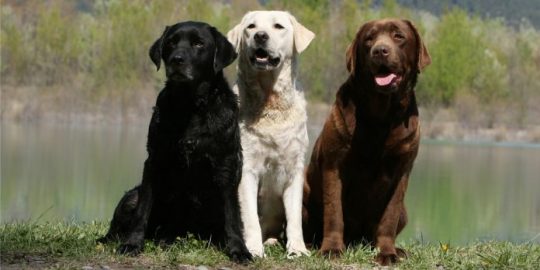
1. The Labrador Retriever has been on the AKC’s top 10 most popular breeds list for longer than any other breed.
2. A dog’s nose print is unique, much like a person’s fingerprint.
3. Forty-five percent of U.S. dogs sleep in their owner’s beds.
4. Speaking of sleeping … all dogs dream, but puppies and senior dogs dream more frequently than adult dogs.
5. Seventy percent of people sign their dog’s name on their holiday cards.
6. A dog’s sense of smell is legendary, but did you know that their nose has as many as 300 million receptors? In comparison, a human nose has about 5 million.
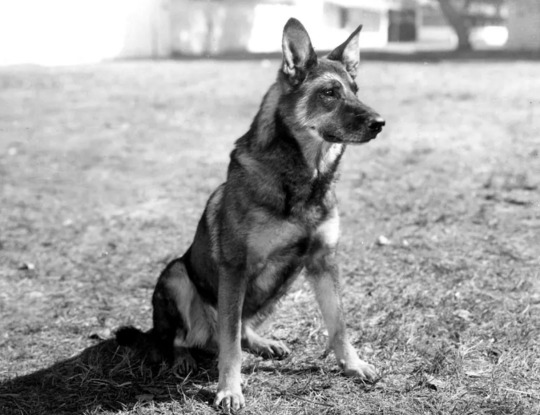
7. Rin Tin Tin, the famous German Shepherd Dog, was nominated for an Academy Award.
8. Dogs’ noses can sense heat and thermal radiation, which explains why blind or deaf dogs can still hunt.
9. The French Bulldog was first named the most popular breed in 2022.
10. The name Collie means “black.” (Collies once tended black-faced sheep.)
11. Yawning is contagious — even for dogs. Research shows that the sound of a human yawn can trigger one from your dog. And it’s four times as likely to happen when it’s the yawn of a person your pet knows.

12. The Dandie Dinmont Terrier is the only breed named for a fictional person, a character in the novel “Guy Mannering” by Sir Walter Scott.
13. Dogs curl up in a ball when sleeping to protect their organs — a holdover from their days in the wild, when they were vulnerable to predator attacks.
14. The Basenji is not technically “barkless,” as many people think. They can yodel.

15. The Australian Shepherd is not actually from Australia. In fact, they are an American breed.
16. … And the Labrador Retriever is originally from Newfoundland.
17. Human blood pressure goes down when petting a dog. And so does the dog’s.
18. There are over 75 million pet dogs in the U.S. — more than in any other country.
19. A person who hunts with a Beagle is known as a “Beagler.”
20. Dogs are not color-blind. They can see blue and yellow.
21. All puppies are born deaf.

22. Dalmatians are born completely white. They develop their spots as they get older.
23. Dogs have about 1,700 taste buds. We humans have between 2,000 and 10,000.
24. When dogs kick backward after they go to the bathroom, it’s not to cover it up, but to mark their territory, using the scent glands in their feet.
25. A study shows that dogs are among a small group of animals who show voluntary unselfish kindness towards others without any reward.
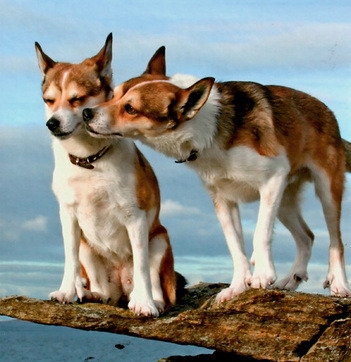
26. The Norwegian Lundehund is the only dog breed created for the job of puffin hunting.
27. Greyhounds can beat cheetahs in a race. While cheetahs can run twice as fast as Greyhounds, they can only maintain that 70 mph speed for about thirty seconds. A Greyhound can maintain a 35 mph speed for about seven miles. The cheetah may start out first, but the Greyhound would soon overtake them.
28. The Bloodhound’s sense of smell is so accurate that the results of its tracking can be used as evidence in a court of law.

29. According to Guinness World Records, a Great Dane named Zeus is the world’s tallest male dog. Zeus is 3 feet, 5.18 inches tall.

30. What about the shortest dog? According to Guinness World Records, the shortest dog ever recorded was Pearl the Chihuahua. She measures 3.59 inches tall.
24 notes
·
View notes
Text
•••••READ PINNED POST••••• I see you have found your way to my blog. This Tumblr Blog exists for ME, so if there’s something you don’t like on this Blog, you’re more than welcome to not follow me. In order to speak to me, & to hopefully answer some questions before they are asked, I’ve given you some information on who I am as a Person. After you read that, you’ll be able to see MY BLOG RULES & some photos:)
****Basic Information****
- 💜Cecelia💜
- 33 years on Earth
- California Born, Iowa Living
- 4’11/58 inches tall/147.32 centimeters tall
- Married 9 years, together for 13💍
- 3 Children, oldest to youngest:
Christine - 15
Lily - 10
Jack - 7
****I AM****
- Permanently Disabled
- Mental Health Advocate
- Chronically Physically & Mentally ill
- Bi-Sexual
- Polyamorous (Not Interested)
- I stand up for Black Lives Matter. ✊🏿
- Feminist
- Equality For Everyone
- No-one is an “Alien” in any Country! Its everyone’s world, not just yours!
- I believe in God for my own Spiritual Reasons, and I 100% Support People that do not.
****My Animals****
- 1 Horse: April, Mare, American Quarter Horse, Black-Bay, lived to be 33, passed in 2001. 🪽
- 2 female Cats: Athena & Quinn
- 1 Male Cat: Deckster (rip) 🪽
- 3 dogs:
Lilo - Dachshund/Chihuahua, Female, lived to 11 years old, passed away in 2022. 🪽 🐾
Stitch - Beagle, Male, 3 years old as of August 2023.
Ohana: Beagle/Dachshund, Female,born March 5, 2023.
- 15 Fur Grand Babies, 8 have entered Heaven 🪽
****FUN FACTS****
- Short Friend
- Singer
- Unusually thorough knowledge of Dog Breed’s
- Loves Horses
- Can quote two movies only: Twilight & Finding Nemo
⚠️ ⚠️⚠️⚠️⚠️⚠️⚠️⚠️⚠️⚠️⚠️⚠️⚠️
BEFORE INTERACTING WITH THIS USER YOU MUST KNOW AND UNDERSTAND THESE RULES:
****IF YOU ARE UNDER THE AGE OF 21, DO NOT INTERACT WITH THIS BLOG USER!*****
- PUT YOUR AGE IN YOUR BIO! If it is not in your bio or pinned post, I will block you!
- DO NOT send me nudes. DO NOT ASK IF YOU CAN SEND NUDES THE ANSWER IS NO! You WILL be blocked if you ask me to send them, and you will be blocked if you send them without being asked.
- IF YOUR BLOG IS ANY OF THE FOLLOWING, I WILL NOT FOLLOW YOU:
1) Hidden from Tumblr
2) No bio
3) Under 21
4) Nothing on said blog
5) All Porn, nothing else
6) Christian
7) USA/Conservative Bullshit 🤮
*************************
Be respectful to me be it in messages or asks or you WILL be blocked.
- Just because you follow me, does NOT mean I will follow you.
- I WILL NOT FOLLOW YOU IF TUMBLR HAS HIDDEN YOUR BLOG!!!! DO NOT TELL ME TO “Change my settings”!
- Assuming you are 21+, you can contact me anytime, about anything! I’m here for you and you are NEVER EVER ALONE!!!!
- Please do not send me a message asking me to text you. I do not give my phone # out.
Adding things to this post daily, so please come back!
🌈 SELFIES:








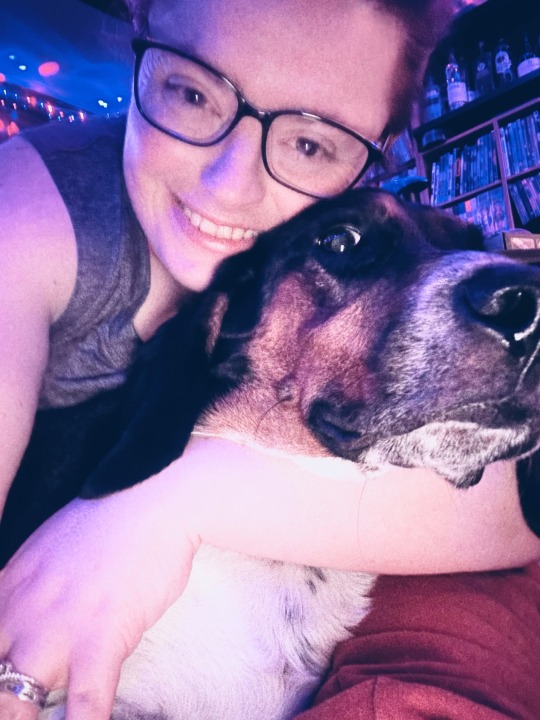

114 notes
·
View notes
Text


Pt 2
Today's Dog: 13 inch beagle! Affectionately referred to as the little beagle (due to its 15 inch counterpart), the 13 inch has sadly seen less competitive success than their sibling. Beagles as a whole have only had two Westminster Best In Shows (Uno and Miss P), who were both 15 inch and actually related! 13 inch beagles are very good companion dogs. I have met many, and they really like biting shoes when they're young! I don't know why I chose two scenthounds today 🫡
Today's Monkee: (I'd Go The) Whole Wide World! This is a cover of the Wreckless Eric song, and was released in 1987 on Pool It! which was the first album to feature Peter since Head. It's sung by Micky. The album was not very well recieved outside of its solitary single, but (I'd Go The) Whole Wide World is looked upon a little more fondly in hindsight.
4 notes
·
View notes
Text
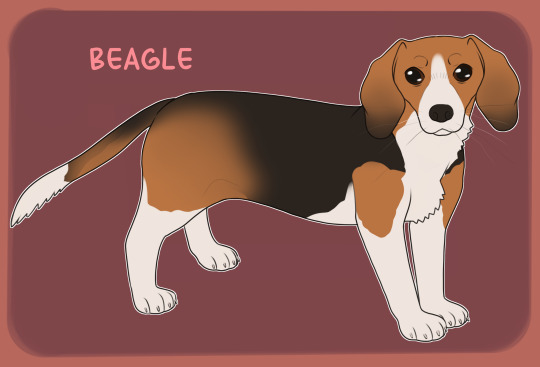
Beagle
Not only is the Beagle an excellent hunting dog and loyal companion, it is also happy-go-lucky, funny, and - thanks to its pleading expression - cute. They were bred to hunt in packs, so they enjoy company and are generally easygoing. There are two Beagle varieties: those standing under 13 inches at the shoulder, and those between 13 and 15 inches. Both varieties are sturdy, solid, and 'big for their inches,' as dog folks say. They come in such pleasing colors as lemon, red and white, and tricolor. The Beagle's fortune is in his adorable face, with its big brown or hazel eyes set off by long, houndy ears set low on a broad head. A breed described as 'merry' by its fanciers, Beagles are loving and lovable, happy, and companionable' - all qualities that make them excellent family dogs. No wonder that for years the Beagle has been the most popular hound dog among American pet owners. These are curious, clever, and energetic hounds who require plenty of playtime.
(source)
If you like my work please consider commissioning me! Also, consider supporting me on Patreon or buying me a Ko-fi!
2 notes
·
View notes
Text
paw patrol oc

this is copper barktin barns
Name copper barktin barns
Age 13
Gender male
Date of Birth april 21
Owner oliva lawson
Type of Dog Siberian Husky mix with beagle,
Place of Residence he lives in adventure city
job spy
Appearance
Height 22 inches
Weight 40 lbs
Fur Color dark brown, light brown and white
Fur Patterns in photo
Eye Color brown
Collar Color black
~PERSONALITY~
Likes Sweets, Ryder, The Paw Patrol, Space, Stars, Aliens, Merpups, being a spy trainging ready making gadgets saving people Cookies, stuffed animals, cats, helping others, exploring, taking care of children, making new friends, taking care of animals, cooking, spicy food, chips, painting, dancing, romance novels/movies/tv shows, reading, teasing his friends, hugs, movies, singing,
Dislikes
~ABILITIES, UNIFORM & EQUIPMENT~
Member of the PAW Patrol?
(Yes or No) no
Uniform Image
( imagine it for a pup) an the outfit on copper
Uniform Colors black
Pup pack:spy pack, flight gear, drive gear,climbing gear
Pup tag in photo
Vehicle: a black motorcycle with with techy stuff
Pup house: making it
Pup-Pack Tools
blankets, pocket knives, food, , first aid kit equipment, zip line, spy vision/thermal goggles, night vision goggles, & a smoke bomb. spy drone bulletproof spy vest,
~BACKSTORY~ working on it
"QUOTE" time to spy
Don't mention your move before you make a move
Waiting. Like it or not, it's a skill all spies have to master eventually.
"I've been a spy for almost all of my adult life – I don't like being in the spotlight.
family Benjamin bang barkin older brother like going by bang
crush has a girlfriend name iecc shawnspaws
friends the paw patrol my ocs your oc
extra
has a team called the each shards
1 note
·
View note
Text
A Tale of Two Tortoises
The HMS Beagle reached the Galapagos Islands in 1835 and in addition to his more famous finch observations, Charles Darwin also made the acquaintance of many tortoises. Unlike today, tortoises were prolific in the Galapagos and Darwin and his shipmates sampled them culinarily in addition to making observations. He even attempted to ride the large animals, but found it difficult to keep his his balance.
When the Beagle left the Galapagos, they took several tortoises with them, at least four of which made it back to England alive; two were kept as pets by Captain Robert Fitzroy, one was kept by Darwin, and another by his assistant, Syms Covington. What happened to his tortoise afterwards remained a master until quite recently.
According to legend, Harriet the tortoise was collected by Darwin in the Galapagos in 1835, then given to the Botanic Gardens in Australia by John Clemens Wickham, first lieutenant on the Beagle, in 1860. Harriet probably lived at the zoo in the gardens until its closure in 1952, and at some point (perhaps around that time?), she was moved to the Australia Zoo, where she she lived until her death in 2006 at around 175 years of age, one of the oldest known tortoises. However, Harriet is thought to have originated from the island of Santa Cruz, which Darwin never visited, and she cannot have been his tortoise.

Harriet with Steve and Terri Irwin at the Australia Zoo. Photograph from the Australia Zoo.
The identity of Darwin's tortoise was unknown until 2009, when a stuffed juvenile tortoise specimen was found in the archives of the Natural History Museum in London. This stuffed tortoise measured about seven inches long and had the name James etched into its shell. Colin McCarthy, then collections manager for reptiles, checked the museum's archives and sure enough, a record was found stating that James (Darwin's tortoise) and Charles (Covinton's tortoise) were donated by Darwin in 1837. Darwin found his tortoise on James Island (now called Santiago), and Covington's came from Floreana. It is known that Darwin presented the tortoise on 13 August 1837 to John Edward Gray, assistant keeper of zoology, and it is likely that it unfortunately did not live very long in in the unfamiliar English climate. Over time, Darwin's name disappeared from new records of the animal, and its origins were forgotten until it was rediscovered by Colin McCarthy.
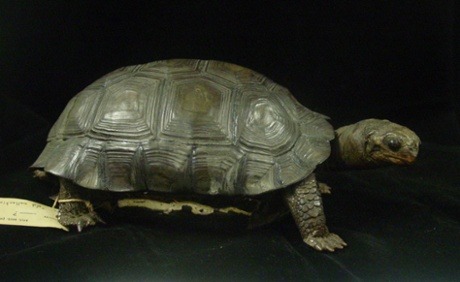
Darwin's tortoise, James, at the Museum of Natural History. Photograph from the Museum of Natural History, London.
Although Darwin's tortoise has been located, questions still remain. Did Wickham bring Harriet to Australia? If not, who did, and when? What happened to Covington's tortoise, which is thought to represent a now extinct subspecies? Was it (perhaps most probably) inadvertently destroyed, or is it still out there somewhere? What happened to the other Beagle tortoises? Were they preserved as well? Perhaps someday new evidence will arise to help solve these mysteries.
Source
1 note
·
View note
Text
Beagle Dog Breeds: Overview, Description, Temperament, & Top 1 Amazing Facts
The Beagle Dog Breeds is a popular pet that never loses its allure.
The Beagle, a member of the hound family, has a special place in many people's hearts because of its intelligence and gentle nature. Their soulful eyes and wagging tails have helped them to become one of the most popular dog breeds. Originally trained to hunt small prey such as rabbits, they have an instinctive desire to track scents. If they pick up a scent while out walking, this can lead them astray, so owners should keep their dogs on a leash to keep them from wandering too far.
One of the Beagle's distinguishing characteristics is its mischievous personality. They have a lively and curious side, and their love of exploration frequently leads to misadventures. They are gregarious creatures who thrive in the company of others. They may become bored if left alone for extended periods of time and resort to mischief to keep themselves entertained. As a result, their human parents must provide appropriate mental and physical stimulation for them and avoid leaving them alone for extended periods of time.

Introduction
Because of its soulful eyes, friendly personality, and boundless energy, the Beagle has a special place in the hearts of dog lovers all over the world. Its popularity is undeniable because of how adorable it is, how friendly it is, and how useful it is as a pet. In this essay, we will discuss the history, characteristics, training, care, and cultural significance of the Beagle breed.
History
Breed Origins: The Beagle is an ancient breed that may have existed as far back as the Roman Empire. They were bred to hunt small animals like rabbits because they could smell them from a long distance.
Differences from other Beagle breeds: Although the Beagle breed as a whole does not change much, each one has a slightly different coat colour and markings. These distinctions are part of what distinguishes each dog.
Characteristics
They are easily identified due to their small size, short legs, and large, expressive eyes. Because their coats are usually short and thick, they don't require much grooming.
Personality traits: They are known for being friendly and social, and as a result, they are frequently referred to as "merry" dogs. They get along well with other dogs and form strong bonds with their carers.
They have an inquisitive and lively personality. They are known to be playful and make excellent pets for both families and singles.
They range in size from small to medium. They stand 13 to 15 inches (33 to 38 cm) tall on average.
Lifespan: A Beagle typically lives between 12 and 15 years, but with proper care and a healthy lifestyle, some can live even longer.
Socialisation and education
The Importance of Early Training and Socialisation: Through early training and socialisation, beagles can learn good manners and adapt well to different environments.
Positive reinforcement training, in which the dog is rewarded with treats and praise for good behaviour, is an effective method for training a Beagle. Treats are a good way to get them to do something because they enjoy food.
Common behavioural issues and how to deal with them:
They have a strong hunting instinct, and scents can sometimes obstruct their walks. This behaviour can be managed by teaching them to obey commands and employing leashes or long lines.
Maintenance and upkeep
Common Diseases and Symptoms: Beagles are generally healthy dogs, but their genes can cause hip dysplasia and ear infections. Regular vet visits are essential for their health.
They require a well-balanced diet to maintain a healthy weight and provide the energy they require. Obesity should be avoided in order to avoid health problems.
Beagles are active dogs who require regular exercise to keep their minds and bodies active. Every day, taking walks and playing is beneficial.
Grooming and Hygiene: Beagles' fur is short and moderately shedding. Brushing their coat on a regular basis keeps it healthy and reduces shedding.
Breeding and reproduction: When breeding animals responsibly, the emphasis is on health and behaviour in order to produce puppies with the best characteristics possible. Ethical breeders prioritise the health and happiness of both the parent dogs and the puppies.
Where to buy and adopt: Go to reputable breeders who prioritise health and morals. Another nice thing to do is to adopt from shelters and rescue organisations.
The Cultural Beagle
Famous Beagle: One of the most well-known Beagles is "Snoopy" from Charles Schulz's "Peanuts" comic strip. He is well-known for his imaginative adventures and friendly demeanour.
Beagles in Film and Television: Beagles have appeared in a number of films and television shows, usually as likeable and cute characters.
Because of their expressive faces and friendly personalities, beagles are frequently used in advertisements, memes, and social media.
Conclusion
Finally, the popularity of the Beagle demonstrates how endearing, kind, and valuable it is as a companion. From its early days as a hunting dog to its current life as a treasured family pet, the Beagle has had a significant impact on people's lives. Because of careful training, care, and breeding, the heritage of this endearing breed lives on in the hearts and homes of dog lovers all over the world.
0 notes
Text
Beagle Dog Breeds: Overview, Description, Temperament, & Top 1 Amazing Facts
The Beagle is a popular pet that never stops being cute.
The Beagle, a member of the hound family, has a special place in the hearts of many people because it is smart and kind. Because of their kind eyes and wagging tails, they have become one of the most popular types of dog. When they were young, they were taught to hunt small animals like rabbits, so it is in their nature to follow scents. This can lead them astray if they pick up a scent while walking, so owners should keep their dogs on a leash to keep them from going too far.
The Beagle's mischievous nature is one of the things that make it stand out. They are curious and full of life, and their desire to explore often gets them into trouble. They like to be around other people and do better when they do. If you leave them alone for long periods of time, they may get bored and do something bad to keep themselves busy. Because of this, it is very important for their human parents to keep them mentally and physically busy and not leave them alone for long periods of time.
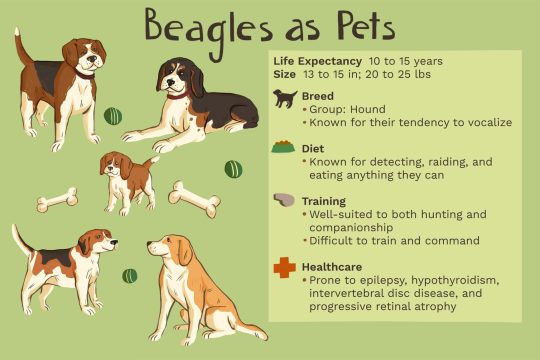
Getting started
Because of its soulful eyes, friendly personality, and endless energy, the Beagle has a special place in the hearts of dog lovers all over the world. Its popularity can't be denied because of how cute it is, how friendly it is, and how useful it is as a pet. In this essay, we'll talk about the Beagle's history, characteristics, training, care, and cultural significance.
The past
The Beagle is an old breed that may have been around since the Roman Empire. They were first made to hunt, especially small animals like rabbits, because they could smell them from far away.
Differences from other Beagle breeds: The Beagle breed as a whole doesn't change much, but each one has a slightly different coat colour and markings. Each dog is different because of these things.
Things that make up
The fact that they are small, have short legs, and have big, expressive eyes makes them easy to spot. Most of the time, their coats are short and thick, so they don't need much grooming.
Characteristics: They are known for being friendly and outgoing, which is why they are often called "merry" dogs. They get along well with other dogs and form strong bonds with the people who take care of them.
Personality: They are full of life and curiosity. They are known for being playful and make great pets for both families and people who live alone.
Size: These dogs are between small and medium in size. They are 13 to 15 inches (33 to 38 cm) tall on average.
Lifespan: A Beagle usually lives between 12 and 15 years, but with good care and a healthy lifestyle, some can live longer.
Training and getting to know people
Importance of Early Training and Socialisation: Beagles need early training and socialisation to learn good manners and adapt well to different environments.
Positive reinforcement training is a good way to train a Beagle. This is when the dog gets treats and praise for being good. Treats are a good way to get them to do something because they love food.
Common behaviour problems and how to handle them:
They have a strong urge to hunt, and scents can sometimes get in the way of their walks. You can teach them to listen to commands and use leashes or long lines to stop them from doing this.
Taking care of things
Common Diseases and Symptoms: Most beagles are healthy, but because of their genes, they can get hip dysplasia and ear infections. It's important for their health to go to the vet often.
They need a diet that gives them the energy they need and keeps them at a healthy weight. Obesity is bad for your health, so you should try to avoid it.
Beagles are active dogs that need regular exercise to keep their minds and bodies active. Every day, it's good to go for walks and play.
Grooming and Hygiene: A beagle's fur is short and sheds a little bit. When you brush their coat often, it stays healthy and sheds less.
When animals are bred in a responsible way, the focus is on their health and behaviour so they can have the best puppies possible. Breeders who do things the right way care about the health and happiness of both the parents and the puppies.
Where to buy and adopt: It's best to go to breeders with good reputations who put health and morals first. Another kind thing to do is to get a pet from a shelter or rescue group.
The Culture of the Beagle
One of the most well-known Beagles is "Snoopy" from Charles Schulz's "Peanuts" comic strip. People know him for his creative adventures and his friendly nature.
Beagles have been in a number of films and TV shows, usually as cute and likeable characters.
Because beagles have friendly personalities and expressive faces, they are often used in ads, memes, and social media.
In the end,
Lastly, the Beagle's popularity shows how cute, friendly, and useful it is as a pet. From its early days as a hunting dog to its current life as a beloved family pet, the Beagle has made a big difference in people's lives. This charming breed's history lives on in the hearts and homes of dog lovers all over the world because they train, care for, and breed them with care.
0 notes
Text
No, Fox Terriers are not related to foxes. Despite the fact that they were bred to hunt foxes, the…
14 Fascinating Facts About Fox Terrier Dog Breeds
Discover fascinating facts about the lively and energetic Fox Terrier dog breeds, such as their history, temperament, and distinguishing characteristics.
What exactly is a Fox Terrier Dog?
The Fox Terrier is an English dog breed that comes in two varieties: smooth and wire-haired. They are small to medium-sized dogs who are known for being playful, energetic, and loyal. They were originally bred for fox hunting and have strong hunting instincts, but with proper socialization and training, they make excellent family pets. They must exercise and groom themselves on a regular basis to maintain their health and appearance.
Overview of the Fox Terrier Dog
The Fox Terrier is a small to medium-sized dog breed with a distinctive wiry coat that comes in smooth and wire-haired varieties. These dogs are popular pets because they are energetic and full of personality. They were popular hunting dogs in the past due to their loyalty, intelligence, and courage.
Fox Terriers are now primarily kept as companion animals and excel in a variety of canine sports, including agility and obedience competitions. To avoid boredom and destructive behavior, they require regular exercise and mental stimulation. Overall, the Fox Terrier is a versatile breed that is ideal for an active family.
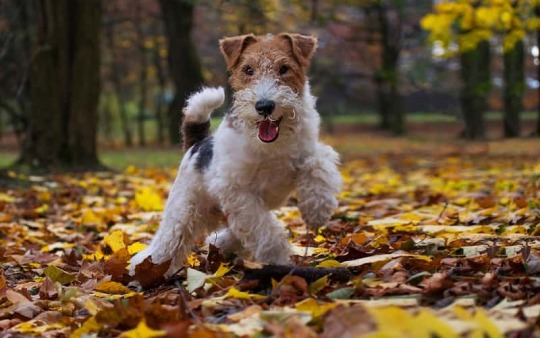
What is the history of the Fox Terrier?
The Fox Terrier is a dog breed that originated in the 18th century in England. They were bred to hunt foxes and other small game, and their intelligence and agility were highly valued. The Smooth Fox Terrier and the Wire Fox Terrier are the two varieties of the breed. The Smooth Fox Terrier was developed by crossing several breeds, including the Beagle and the Greyhound, whereas the Wire Fox Terrier was developed by crossing the Rough-Coated Black-and-Tan Terrier and the Rough-Coated Black-and-Tan Terrier.
Both breeds rose to prominence in the show ring and have been recognized by the American Kennel Club since the late 1800s. Fox Terriers are now mostly kept as pets, though they can still be used for hunting and other activities.
Size of a Fox Terrier Dog
Fox Terrier Dog Size: Fox Terriers are small to medium-sized dogs that weigh between 13 and 20 pounds (6-9 kg) and stand 10 to 15 inches (25-38 cm) tall at the shoulder.
5 Fascinating Fox Terrier Dog Breed Facts:
Smooth Fox Terriers and Wire Fox Terriers are the two types of Fox Terriers.
In the 18th century, these dogs were bred for fox hunting in England.
Both types of Fox Terriers have a high-energy, playful personality and must be exercised on a regular basis.
Mark Twain, the famous American writer, had a Smooth Fox Terrier named “Trixie.”
Fox Terriers have appeared in films, television shows, and advertisements, such as the iconic RCA Victor logo, which depicts a dog named Nipper listening to a gramophone.
Fox Terrier Temperament and Personality Traits
Fox Terrier temperament and personality traits are known for their high energy, intelligence, and assertiveness. They are devoted to their owners but can be suspicious of strangers. Because fox terriers have a strong prey drive and enjoy chasing small animals, they should always be kept on a leash when out and about.
They are generally friendly with children, but their high energy level may cause them to accidentally knock over small children in their excitement. As a result, when playing with children, they should be supervised.
Fox Terriers are also known for their obstinacy, which can make training difficult. For this breed, early socialization and obedience training are highly recommended.
Fox Terriers are active, curious, and self-assured dogs who thrive in an environment that provides plenty of physical and mental stimulation. Owners who give their dogs enough exercise and training will be rewarded with a wonderful companion.
Fox Terrier Appearance and Coat Characteristics
There are two types of Fox Terriers: smooth and wire-haired. The smooth coat is short, dense, and glossy, and it lies flat against the skin. The wire-haired variety has a rougher, denser, wirier, and longer coat than the smooth-coated variety. Both have similar coloring, which is typically white with black or brown markings.
Fox Terriers are small-to-medium-sized dogs with a muscular build, a wedge-shaped head, pointed ears, and an animated demeanor. They are distinguished by their alert and active personalities.
Fox Terrier Health Concerns and Care
Fox Terriers are a small to medium-sized dog breed that is prone to certain health issues. Hip dysplasia, Legg-Calve-Perthes disease, patellar luxation, and deafness are examples of these.
Regular exercise and a well-balanced diet are essential for the overall health of a Fox Terrier. Regular veterinary check-ups are also necessary to monitor their health and detect any potential problems early on.
Furthermore, proper grooming is essential for the health of a Fox Terrier. To prevent infections, this includes regular baths, nail trimming, and ear cleaning. Dental care is also important because dental disease is common in dogs, so brushing their teeth on a regular basis and giving them dental chews can help them maintain good oral health.
Overall, being aware of common health issues and providing regular care and attention can help ensure that your Fox Terrier lives a happy, healthy life.
Lifespan of Fox Terrier Dog Breeds
The Smooth Fox Terrier and Wire Fox Terrier are two Fox Terrier dog breeds with average lifespans of 12-15 years. Some people, with proper care and attention to their health needs, can live for up to 18 years. Genetics, diet, exercise, and overall health maintenance are all factors that can influence a Fox Terrier’s lifespan.
Regular veterinary check-ups and preventative care can help Fox Terriers stay healthy and possibly live longer lives.
Common Fox Terrier Diseases
Allergies, skin issues such as dermatitis or mange, dental issues such as periodontal disease, eye issues such as cataracts or glaucoma, and hip dysplasia are all common diseases in Fox Terriers. It is critical to monitor your Fox Terrier’s health on a regular basis and schedule routine check-ups with a veterinarian to catch any potential health issues early on.
Fox Terrier Nutrition and Feeding Requirements
Fox Terrier nutrition and feeding requirements vary depending on their age, activity level, metabolism, and overall health. Fox Terriers, as a breed, require a well-balanced diet rich in essential nutrients such as protein, fat, carbohydrates, vitamins, and minerals.
Most Fox Terriers would benefit from a high-quality commercial dog food designed specifically for small breeds or active dogs. It’s critical to read the label to ensure that the food contains enough protein from animal sources like chicken or beef. Avoid foods that are high in fillers or by-products.
It is also critical not to overfeed your Fox Terrier because they are prone to obesity. A general rule of thumb is to feed them two to three small meals per day instead of one large meal. Treats should be consumed in moderation and as part of a healthy diet.
Consultation with a veterinarian or animal nutritionist can help you determine your Fox Terrier’s specific dietary requirements. Furthermore, providing fresh water at all times and ensuring regular exercise are critical components of their overall health and well-being.
Fox Terrier Grooming Requirements
A Fox Terrier’s grooming requirements include regular brushing to prevent mats and tangles in their thick, wiry coat. They also require trimming and stripping of dead hairs on a regular basis to keep the coat’s texture. Their ears should be cleaned and checked for signs of infection on a regular basis, and their nails should be clipped as needed. Bathing should be done only when necessary, as it can strip natural oils from their skin and coat.
Overall, proper grooming is necessary to keep a Fox Terrier looking and feeling good.
Fox Terrier Exercise and Training
Training and exercise are essential for Fox Terrier health and well-being. Regular exercise can aid in the prevention of obesity and the promotion of cardiovascular health, while training can assist in the learning of good behavior and obedience.
Fox Terriers require a moderate amount of physical activity each day when it comes to exercise. They enjoy long walks, jogging, and fetching. It’s critical to provide them with both mental and physical stimulation, so games like hide-and-seek or agility courses can help.
Training should begin early in the life of a Fox Terrier, as they can be stubborn and strong-willed if not properly trained. This breed responds well to positive reinforcement techniques such as praise and treats. To accommodate their short attention spans, training sessions should be kept short and consistent.
Overall, giving Fox Terriers regular exercise and consistent training will help to ensure that they are happy, healthy, and well-behaved companions.
Fox Terrier Nutrition and Diet
Fox Terriers are small to medium-sized dogs that are known for their energy and curiosity. A balanced and nutritious diet is essential for the health and well-being of any dog breed.
A Fox Terrier’s diet should include high-quality protein sources like meat, poultry, fish, or eggs, as well as complex carbohydrates like vegetables and grains. Fats are also required for energy and for healthy skin and hair.
It’s critical to feed your Fox Terrier the right amount of food for their age, weight, and activity level. Obesity and other health issues can result from overeating. Make sure your Fox Terrier has constant access to fresh water.
In conclusion, a balanced and nutritious diet tailored to your Fox Terrier’s specific needs is critical to their overall health and longevity.
Fox Terrier Reproduction
Breeding Fox Terriers entails choosing compatible parent dogs with desirable traits and characteristics in order to produce healthy, high-quality offspring. Here are five fascinating Fox Terrier dog breed facts:
Smooth Fox Terriers and Wire Fox Terriers are two distinct breeds of Fox Terriers. The Wire Fox Terrier has a wiry, dense coat, whereas the Smooth Fox Terrier has a short, smooth coat.
Fox Terriers were originally bred for fox hunting in England. They were taught to hunt foxes by chasing them out of their dens and barking to warn the hunter of their presence.
These breeds are known for their energy and intelligence, which makes them excellent competitors in dog sports like agility and obedience.
The most well-known Fox Terrier is probably “Toto” from The Wizard of Oz, who was a female Cairn Terrier who played the role of a male Fox Terrier named Toto in the film.
Fox Terriers have long been popular with celebrities, including King Edward VII and actor James Dean, who had a Wire Fox Terrier named Marcus.
Are Fox Terriers suitable as family pets?
Yes, Fox Terriers can make excellent family pets. They are friendly, energetic, and loyal dogs who enjoy human company. They do, however, have a high prey drive and may not get along with other pets. These tendencies can be mitigated with proper socialization and training. It is critical to remember that Fox Terriers require regular exercise and mental stimulation to avoid boredom and destructive behavior.
As a result, they may not be the best choice for families who are unable to devote enough time and attention to their pet.
Are Fox Terrier puppies good with kids?
Fox Terriers can be good companions for children, but it all depends on the temperament and training of the individual dog. As with any dog, interactions between a Fox Terrier and children must be supervised to ensure that both are safe and comfortable. Proper socialization and training can help ensure that your Fox Terrier is well-behaved and friendly around children.
Do Fox Terrier dogs get along with other animals?
If properly socialized from a young age, Fox Terrier dogs can be good with other animals. Their high prey drive, on the other hand, can cause them to chase and potentially harm smaller animals such as cats or rodents. It’s critical to monitor any interactions between a Fox Terrier and other animals, especially if they’ve never met before. Training and socialization can help reduce the likelihood of aggressive behavior toward other animals.
Where Can I Find and Adopt a Puppy Fox Terrier?
You can begin your search for and adoption of a Fox Terrier puppy by contacting local animal shelters or rescue organizations that specialize in terrier breeds. You can also search online through websites that list adoptable pets, such as Petfinder or Adopt-a-Pet. Before adopting a dog, it is critical to conduct research and learn about the breed to ensure that it is a good fit for your lifestyle and needs.
Once you’ve decided on a puppy, thoroughly vet the breeder or rescue organization and ask any pertinent questions about health, temperament, and previous care.
What is the cost of a Fox Terrier dog?
The cost of a Fox Terrier dog varies depending on several factors, including location, breeder reputation, pedigree, and age. A Fox Terrier puppy can cost anywhere from $800 to $2,500 on average. Some breeders, however, may charge even higher prices for dogs from exceptional breed lines or with show potential. To ensure you get a healthy and well-bred Fox Terrier, do your research and find a reputable breeder.
Where Can I Find and Save a Fox Terrier?
To purchase a Fox Terrier, look for reputable breeders online or in your area. Make sure to conduct extensive research on the breeder and request health clearances for the parents. Fox Terriers may also be available for adoption at some animal shelters or rescues. You can find these organizations online or in person and inquire about adopting a Fox Terrier.
What Can a Fox Terrier Eat?
Fox Terriers can thrive on a well-balanced diet rich in high-quality protein from sources such as meat, fish, or eggs, as well as carbohydrates from whole grains and vegetables. Foods that are toxic to dogs, such as chocolate, grapes, raisins, onions, garlic, and avocado, should be avoided.
Furthermore, it is best to avoid feeding them table scraps or human food, as this can lead to obesity and other health issues in dogs. Consult your veterinarian to determine the best diet for your particular Fox Terrier based on their age, weight, and overall health.
What Can’t a Fox Terrier Eat?
Certain foods should be avoided by Fox Terriers because they can be harmful to their health. Chocolate, caffeine, alcohol, grapes and raisins, onions and garlic, fatty or spicy foods, and bones from meat or fish are all foods that Fox Terriers should avoid.
Furthermore, unless specifically directed by a veterinarian, avoid giving Fox Terriers any human medications. For specific dietary recommendations for your Fox Terrier, always consult with a veterinarian.
Is a Fox Terrier an intelligent dog?
Yes, Fox Terriers are considered intelligent dog breeds. They have a lot of energy and need a lot of exercise and mental stimulation to stay happy and healthy. They are quick to learn and excel in obedience and agility competitions. Individual personalities and temperaments vary among dogs, so some Fox Terriers may be smarter or more trainable than others.
How Difficult Is It to Care for a Fox Terrier?
A Fox Terrier can be difficult to care for because they are high-energy dogs who require daily exercise and mental stimulation. They also have a strong prey drive, so they may chase after small animals and must be kept in a secure yard or on a leash when outside. Their short coats shed moderately and require regular grooming to keep them looking good.
Furthermore, Fox Terriers are known for their independence and stubbornness, which can make training and obedience more difficult than in other breeds. While caring for a Fox Terrier can be rewarding, prospective owners should be prepared for the challenges and responsibilities that come with owning a high-energy, strong-willed breed.
What issues can a Fox Terrier have?
Deafness, Legg-Calve-Perthes disease, skin allergies, cataracts, lens luxation, and patellar luxation are all possible health issues in Fox Terriers. They may also be predisposed to certain genetic disorders, such as primary lens luxation, a condition in which the eye’s lens becomes dislocated, and ataxia, a neurological disorder that affects coordination and balance. Regular veterinary examinations and care can help prevent and manage these issues.
Is the Fox Terrier typically aggressive?
Fox Terriers are not typically aggressive, but they can be if they are not properly socialized or trained. Fox Terriers, like all dogs, have distinct personalities and temperaments, so it is critical to consider each dog individually rather than assuming that all Fox Terriers will behave similarly. Proper training, socialization, and responsible ownership can help Fox Terriers avoid potentially aggressive behavior.
Do Fox Terrier Dogs Bite?
Fox Terrier dogs can, in fact, bite. If a dog feels threatened or scared, or if they are not properly trained and socialized, he or she has the potential to bite. To prevent aggressive behavior, dog owners must understand their pet’s behavior and body language, as well as train and socialize them appropriately.
Is your Fox Terrier Dog a barker?
Fox Terrier dogs are known to bark a lot. They were bred for hunting and have a strong instinct to warn their owners of potential threats or intruders. Excessive barking in Fox Terriers can be reduced with proper training and socialization.
Why do Fox Terriers tremble?
Fox Terriers shake for a variety of reasons, including excitement, fear, and anxiety, as well as to remove water or dirt from their fur. For many dogs, shaking is a natural behavior that helps them regulate their body temperature and relieve stress. Excessive shaking, on the other hand, may indicate an underlying health issue, so keep an eye on your dog’s behavior and consult a veterinarian if you have any concerns.
When does a Fox Terrier reach full maturity?
A Fox Terrier typically reaches full growth and maturity between the ages of 12 and 18 months. They have reached their full physical size and weight at this age, and their behavior and temperament have developed into their adult personality. However, because each dog is unique and develops at a slightly different rate, it is critical to monitor their growth and development with the assistance of a veterinarian.
Is the Fox Terrier related to the Fox?
No, Fox Terriers are not related to foxes. Despite the fact that they were bred to hunt foxes, the two species are distinct and unrelated. Fox Terriers are a domesticated dog breed, whereas foxes are Canidae family wild animals. The name is more likely derived from their history as fox hunters than from any biological relationship between the two species.
from Thuzyy https://thuzyblog.tumblr.com/post/723890057862316032
0 notes
Text

耳毛可愛いでしょ。 Isn’t my ear hair cute?
#photography#写真#ボンド#Bond#いぬ#犬#イヌ#dog#beagle#13inchbeagle#ビーグル#13インチビーグル#13-inch#13-inch beagle#13 inch#13 inch beagle
1 note
·
View note
Link
Check out this listing I just added to my Poshmark closet: Chala super cute dog crossbody purse with two convertible straps.
0 notes
Text
Beagle: Dog Breed, Care, Video, Adopt Center Full Info
The Beagle is a strain of small scent hounds, analogous in appearance to the important larger foxhound. The beagle was developed primarily for hunting hares known as beagling.
enjoying a great sense of smell and excellent shadowing instincts, the beagle is the primary strain used as a discovery canine for banned agrarian significances and foodstuffs in counterblockade around the world.
The beagle is intelligent and is a popular pet due to its size, good temper, and lack of inherited health problems.
The ultramodern strain was developed in Great Britain around the 1830s from several types, including the Talbot Hound, the North Country Beagle, the Southern Hound, and conceivably the Harrier.
Beagles have been depicted in popular culture since Elizabethan times in literature and oils and more lately in film, TV, and ridiculous books.
Origin: England
Height: 13 to15 inches and Bitches 11 to 15 inches
Weight: 20 to 30 pounds and 15 to 30 pounds
LifeSpan: 12 to15 years
Size: Small
Color: red, black, gold, yellow, brown, chocolate, and liver
Breed Characteristics Of Beagle
Not only is the Beagle an excellent stalking canine and pious companion, but it’s also happy-go-lucky, funny, and thanks to its prayer expression’ cute. They were bred to hunt in packs, so they enjoy the company and are generally easygoing.
There are two Beagle kinds those standing under 13 elevation at the shoulder, and those between 13 and 15 hills. Both kinds are sturdy, solid, and big for their elevation,’ as canine folks say. They come in similar pleasing colors as a bomb, red and white, and tricolor.
The Beagle’s fortune is in his lovable face, with its big brown or hazel eyes set off by long, houndy cognizance set low on a broad head. A strain described as’ jocular’ by its suckers, Beagles are loving and sweet, happy, and companionable’ all rates that make them excellent family tykes.

History Of The Beagle
The beagle’s origin is substantially unknown. William the Conqueror brought theSt. Hubert Hound and the Talbot Hound to Britain in the 11th century. Beagles are analogous to the Harrier and the now-defunct Southern Hound, but they’re lower and slower.
For centuries, people have suspected the origins of this ancient strain. This strain’s name is also shrouded in a riddle. Some experts believe it’s deduced from the Gaelic word beag, while others believe it’s deduced from the French term for the sound hounds make while stalking.
The term “ beagle ” was used to describe lower hounds, though these tykes differed significantly from the ultramodern strain. Elizabeth appertained to the tykes as her singing beagles, and she constantly entertained guests at her royal table by allowing her Pocket Beagles to run around among their plates and mugs.
These types are appertained to interchangeably in 19th- century sources, and it’s possible that the two names relate to the same small variety. Gervase Markham, an early 17th- century minstrel and pen, is quoted in George Jesse’s inquiries into the History of the British Dog from 1866 as saying the beagle is small enough to sit on a man’s hand.
Appearance
The beagle has the general appearance of an atomic Foxhound, but the head is wider and the nib shorter, the expression is fully different, and the legs are shorter in proportion to the body. The eyes are large, hazel, or brown, and have a gentle, hound- suchlike prayer expression.
They weigh between 18 and 35 lbs with the womanish beagle being slightly lower than males on average. Their cranium is strong and slightly domed, with a medium-length, square-cut nib and a black gumdrop nose.
The jaw is important, and the teeth cleave together, with the upper teeth impeccably fitting over the lower teeth.
When the canine is active, the tail doesn’t coil over the reverse and is held upright. The beagle has a muscular body and a smooth, hard fleece that’s medium in length. The frontal legs are carried straight under the body while the reverse legs are muscular and well fraudulent at the stifles.
The large cognizance is long, soft, and Low slightly, with a slight turn towards the cheeks and rounded tips. Beagles have a strong, medium-length neck that allows them to fluently bend to the ground down to pick up a scent.
Temperament
Friendly, sportful, and compact, it’s no wonder the beagle has long been a family favorite. These high-energy hounds need plenitude of diurnal exercise, but formerly duly exhausted they are further than happy to hang at home with their people.
The beagles love to play. They make great companions for children and do well with pussycats and other tykes. As with any strain, it’s important to duly fraternize your beagle from a youthful age so she can learn to play nicely and not get too rough.
It’s also important to educate children on how to duly interact with tykes and always supervise them when playing with any canine.
It’s no surprise beagles are loud.” We bred that into them,” says Brian Kilcommons, author of The Great faves Resort, a training installation in Connecticut.” When a beagle is running in the field in those big circles, the baying does two effects One, it agents the rabbits out of caching, and two, it lets the huntsman know where the canine is.”
Because of their tendency to bark, beagles can make good alert systems, letting their possessors know the moment a neighbor or delivery man starts walking up to the house — just do not anticipate them to follow up with anything other than a drinking wag of the tail.
Because of their noise position and high prey drive, this strain can come to a sprinkle if not duly trained and watched for. These pack hounds are also the happiest with the company and should not be left alone for too long. However, she’ll howl for hours on end, If your beagle becomes lonely or wearied.
Beagles are smart, curious tykes, but do not anticipate them to incontinently observe your every command – she’d much rather follow her nose and explore than sit online. It’s veritably possible to train a beagle, but it’ll bear lots of tolerance and harmonious positive underpinning training sessions.
Make sure you have a plenitude of treats on hand, because what may take certain types of 20 twinkles to learn,” with a beagle you are presumably talking about two weeks,” Kilcommons says.
But once she’s well-trained, a beagle makes a great and biddable canine. Coupled with their fine-tuned sense of smell and friendly faces, this strain is favored by the United States Department of Agriculture at airfields and entry points across the country.
” Beagles were bred to have their nose on the ground, get a scent, and follow it — the brain principally goes into overdrive on scent work,” Kilcommons says.
More details:https://animalatoz.com/beagle/
0 notes
Text
Beagle: Dog Breed, Care, Video, Adopt Center Full Info
The Beagle is a strain of small scent hounds, analogous in appearance to the important larger foxhound. The beagle was developed primarily for hunting hares known as beagling.
enjoying a great sense of smell and excellent shadowing instincts, the beagle is the primary strain used as a discovery canine for banned agrarian significances and foodstuffs in counterblockade around the world.
The beagle is intelligent and is a popular pet due to its size, good temper, and lack of inherited health problems.
The ultramodern strain was developed in Great Britain around the 1830s from several types, including the Talbot Hound, the North Country Beagle, the Southern Hound, and conceivably the Harrier.
Beagles have been depicted in popular culture since Elizabethan times in literature and oils and more lately in film, TV, and ridiculous books.
Origin: England
Height: 13 to15 inches and Bitches 11 to 15 inches
Weight: 20 to 30 pounds and 15 to 30 pounds
LifeSpan: 12 to15 years
Size: Small
Color: red, black, gold, yellow, brown, chocolate, and liver
Breed Characteristics Of Beagle
Not only is the Beagle an excellent stalking canine and pious companion, but it’s also happy-go-lucky, funny, and thanks to its prayer expression’ cute. They were bred to hunt in packs, so they enjoy the company and are generally easygoing.
There are two Beagle kinds those standing under 13 elevation at the shoulder, and those between 13 and 15 hills. Both kinds are sturdy, solid, and big for their elevation,’ as canine folks say. They come in similar pleasing colors as a bomb, red and white, and tricolor.
The Beagle’s fortune is in his lovable face, with its big brown or hazel eyes set off by long, houndy cognizance set low on a broad head. A strain described as’ jocular’ by its suckers, Beagles are loving and sweet, happy, and companionable’ all rates that make them excellent family tykes.

History Of The Beagle
The beagle’s origin is substantially unknown. William the Conqueror brought theSt. Hubert Hound and the Talbot Hound to Britain in the 11th century. Beagles are analogous to the Harrier and the now-defunct Southern Hound, but they’re lower and slower.
For centuries, people have suspected the origins of this ancient strain. This strain’s name is also shrouded in a riddle. Some experts believe it’s deduced from the Gaelic word beag, while others believe it’s deduced from the French term for the sound hounds make while stalking.
The term “ beagle ” was used to describe lower hounds, though these tykes differed significantly from the ultramodern strain. Elizabeth appertained to the tykes as her singing beagles, and she constantly entertained guests at her royal table by allowing her Pocket Beagles to run around among their plates and mugs.
These types are appertained to interchangeably in 19th- century sources, and it’s possible that the two names relate to the same small variety. Gervase Markham, an early 17th- century minstrel and pen, is quoted in George Jesse’s inquiries into the History of the British Dog from 1866 as saying the beagle is small enough to sit on a man’s hand.
Appearance
The beagle has the general appearance of an atomic Foxhound, but the head is wider and the nib shorter, the expression is fully different, and the legs are shorter in proportion to the body. The eyes are large, hazel, or brown, and have a gentle, hound- suchlike prayer expression.
They weigh between 18 and 35 lbs with the womanish beagle being slightly lower than males on average. Their cranium is strong and slightly domed, with a medium-length, square-cut nib and a black gumdrop nose.
The jaw is important, and the teeth cleave together, with the upper teeth impeccably fitting over the lower teeth.
When the canine is active, the tail doesn’t coil over the reverse and is held upright. The beagle has a muscular body and a smooth, hard fleece that’s medium in length. The frontal legs are carried straight under the body while the reverse legs are muscular and well fraudulent at the stifles.
The large cognizance is long, soft, and Low slightly, with a slight turn towards the cheeks and rounded tips. Beagles have a strong, medium-length neck that allows them to fluently bend to the ground down to pick up a scent.
0 notes
Text
The Beagle Price: Breeders, Rescues & Shelters
Beagles–whether those standing 13 inches or shorter or those in the 13-15-inch category–are universally recognized for their cheerful demeanor. If you are considering adding a Beagle to your family, you’ll find them at breeders, breed rescues and shelters in your area. Let’s take a look at the Beagle price at each of these options–and the …
This post first appeared in DogTipper.com. Link to original post: The Beagle Price: Breeders, Rescues & Shelters
from DogTipper https://ift.tt/igmI9CX
via IFTTT
0 notes